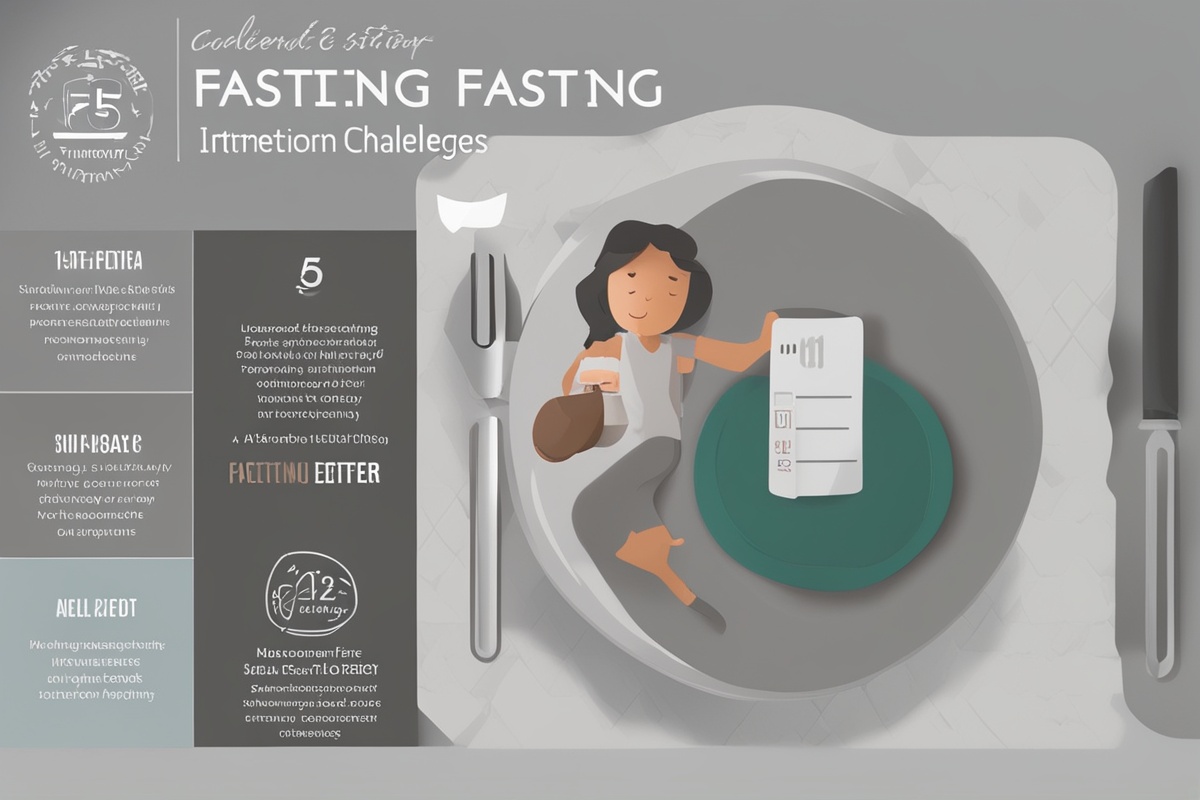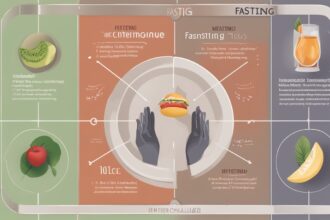Hey there, fellow fasting enthusiasts! If you’ve ever dived into the world of fasting—whether it’s intermittent fasting, extended fasts, or a specific fasting diet—you’ve probably hit a few roadblocks along the way. Trust me, I’ve been there too! Fasting can be an incredible tool for improving health, boosting mental clarity, and even aiding weight loss, but it’s not always a smooth journey. That’s why I’ve put together this comprehensive fasting guide to help you navigate the most common fasting challenges. We’ll explore practical strategies, sprinkle in some science-backed insights, and arm you with tips to make your fasting experience sustainable and rewarding. Let’s break down the barriers and turn fasting into a lifestyle you can stick with!
What Are Fasting Challenges and Why Do They Matter?
Fasting, at its core, is the voluntary abstinence from food and sometimes drink for a set period. While the benefits—like improved insulin sensitivity and cellular repair through autophagy—are well-documented (Mattson et al., 2017), the journey often comes with hurdles. Fasting challenges can range from physical symptoms like hunger pangs and fatigue to mental struggles like irritability or social pressures. These obstacles can derail even the most determined individuals if not addressed. Understanding and preparing for these challenges is a key part of any effective fasting guide, as it helps you build resilience and adapt fasting to fit your unique lifestyle. So, let’s dig into the specifics and figure out how to tackle them head-on.
Physical Challenges: Hunger, Fatigue, and More
One of the first things you’ll notice when starting a fasting plan is how your body reacts. Hunger is, unsurprisingly, the most common complaint. It’s not just about an empty stomach; it’s the hormonal shifts—think ghrelin spikes—that scream, “Feed me!” (Cummings et al., 2002). Then there’s fatigue, often tied to low blood sugar or dehydration during the initial days of fasting. Headaches and dizziness can also creep in, especially if you’re not mindful of electrolytes. These physical fasting challenges can feel overwhelming, but they’re often temporary as your body adjusts to using stored energy like fat for fuel. The trick is to ease into fasting and listen to your body.
- Start with shorter fasting windows, like a 12:12 schedule (12 hours fasting, 12 hours eating), before jumping into 16:8 or longer fasts.
- Stay hydrated—aim for at least 2–3 liters of water daily, and consider adding a pinch of salt to replenish sodium lost during fasting.
- If hunger strikes, sip on black coffee or herbal tea; these can suppress appetite without breaking your fast.
- Ensure nutrient-dense meals during eating windows to prevent deficiencies that exacerbate fatigue.
Mental and Emotional Struggles: Breaking Through the Mind Games
Let’s be real—fasting isn’t just a physical challenge; it’s a mental one too. The idea of skipping meals can trigger anxiety, especially if you’re used to eating every few hours. Cravings for comfort foods can hit hard, often fueled by stress or boredom rather than true hunger. Then there’s the infamous “hanger” (hunger + anger), which science links to drops in serotonin levels during fasting (Harvie & Howell, 2017). Overcoming these emotional fasting challenges requires a mindset shift. Think of fasting as a practice in self-discipline rather than deprivation. Meditation, journaling, or even a quick walk can help redirect your focus when cravings or irritability kick in. This fasting guide isn’t just about skipping meals—it’s about mastering your mind!
Social Pressures: Navigating Food-Centric Environments
Ever notice how much of our social life revolves around food? Family dinners, work lunches, or grabbing coffee with friends can turn into minefields when you’re following a fasting routine. Saying “no” to a slice of birthday cake or explaining why you’re not eating can feel awkward or isolating. Social fasting challenges often lead people to abandon their plans altogether, but they don’t have to. Communication is key—let loved ones know about your fasting goals and why they matter to you. Planning ahead, like scheduling eating windows around social events, can also make a huge difference in sticking to your fasting tips and goals.
- Schedule social meals during your eating window whenever possible to avoid feeling left out.
- Bring a fasting-friendly drink (like sparkling water) to events to keep your hands busy and avoid temptation.
- Be upfront with friends and family about your fasting plan to gain their support and reduce pressure.
- If you must break your fast for an event, don’t stress—get back on track with your next fasting window.
- Focus on non-food aspects of gatherings, like conversation or activities, to shift the focus away from eating.
Health Considerations: When Fasting Isn’t for Everyone
While fasting offers numerous benefits—like potential reductions in inflammation and improved metabolic health (Patterson et al., 2015)—it’s not a one-size-fits-all solution. Certain fasting challenges arise from underlying health conditions or life stages. For instance, individuals with diabetes need to monitor blood sugar closely, as fasting can cause dangerous fluctuations (American Diabetes Association, 2020). Pregnant or breastfeeding women, as well as those with a history of eating disorders, should approach fasting with caution or avoid it altogether. Always consult a healthcare provider before starting a fasting regimen, especially if you’re on medications or have chronic conditions. This fasting guide prioritizes safety—your health always comes first.
Long-Term Sustainability: Making Fasting a Lifestyle
Here’s the thing: fasting isn’t just a quick fix; it’s a lifestyle choice for many. But one of the biggest fasting challenges is maintaining it over the long haul. Crash fasting or overly strict protocols can lead to burnout or binge eating once the fast ends (Tinsley & La Bounty, 2015). The goal of any solid fasting advice is to find a rhythm that works for you. Maybe that’s a 5:2 approach (fasting two days a week) or a daily 16:8 window. Experiment with different fasting strategies to see what feels sustainable. Track how your body and mind respond, and don’t be afraid to adjust. Remember, consistency beats perfection every time. Pair fasting with balanced nutrition and regular movement, and you’ve got a recipe for long-term success.
As we wrap up this fasting guide, I hope you feel empowered to tackle the fasting challenges that come your way. Whether it’s battling hunger, navigating social events, or finding a sustainable routine, remember that fasting is a personal journey. There’s no “right” way to do it—just the way that works for you. Take it one day at a time, celebrate small wins, and don’t hesitate to seek support from communities or professionals if you’re struggling. Fasting can be a powerful tool for transforming your health and mindset, and with the right strategies, you’ve got this! Drop a comment below if you’ve faced any unique fasting obstacles or have tips to share—I’d love to hear your story.
References
- American Diabetes Association. (2020). Standards of medical care in diabetes—2020. Diabetes Care, 43(Supplement 1), S1–S212.
- Cummings, D. E., Purnell, J. Q., Frayo, R. S., Schmidova, K., Wisse, B. E., & Weigle, D. S. (2002). A preprandial rise in plasma ghrelin levels suggests a role in meal initiation in humans. Diabetes, 50(8), 1714–1719.
- Harvie, M., & Howell, A. (2017). Potential benefits and harms of intermittent energy restriction and intermittent fasting amongst obese, overweight and normal weight subjects—A narrative review of human and animal evidence. Behavioral Sciences, 7(1), 4.
- Mattson, M. P., Longo, V. D., & Harvie, M. (2017). Impact of intermittent fasting on health and disease processes. Ageing Research Reviews, 39, 46–58.
- Patterson, R. E., Laughlin, G. A., LaCroix, A. Z., Hartman, S. J., Natarajan, L., Senger, C. M., … & Gallo, L. C. (2015). Intermittent fasting and human metabolic health. Journal of the Academy of Nutrition and Dietetics, 115(8), 1203–1212.
- Tinsley, G. M., & La Bounty, P. M. (2015). Effects of intermittent fasting on body composition and clinical health markers in humans. Nutrition Reviews, 73(10), 661–674.






